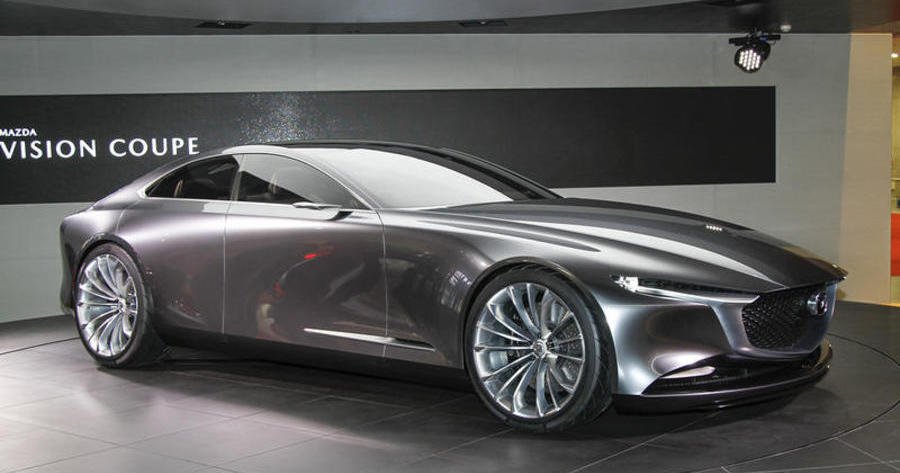Mazda is deploying its new rear-driven platform and straight-six engines for the CX-60 SUV and three more models to follow, but a production version of the firm's admired Vision Coupé concept looks increasingly unlikely, five years after its reveal – and it’s no surprise that SUVs are to blame.
The Vision Coupé was revealed at the Tokyo motor show in 2017 as a flagbearer for the marque's new Kodo design language - which has since been deployed on a raft of production models including the Mazda MX-30 EV, Mazda 3 hatchback and all-new CX-60.
It followed in the footsteps of 2015's more performance-oriented RX Vision concept, and similarly promoted the Japanese firm's 'less is more ethos'. The firm never categorically said it planned to put the concept into production, but it was thought to closely preview the next-generation Mazda 6 saloon, which was due to take on the BMW 5 Series with a new range of inline-six engines.
But now, Mazda has shifted focus to developing more popular SUV models in the vein of its new CX-60 flagship - the first model in its line-up to use the natively rear-driven architecture, dashing hopes for a low-slung, rakish saloon to rival five-door coupés in the vein of the Volkswagen Arteon and Mercedes-Benz CLA.
Mazda Europe’s Joachim Kunz said: “This SUV trend is continuing, and even more for Mazda. It’s what’s selling best.
“It would be very nice… to have the FR [front-engine, rear-driven] concept and six-cylinder engine for a Mazda 6 successor or a large sports coupé. We would like to have it, but at this point in time, it’s most important to sell SUVs.”
Kunz's remarks raise questions about the likelihood of a successor to today's Mazda 6, which was launched in 2012 and heavily updated in 2018. Mazda has confirmed two new models to follow the CX-60 into European dealerships: the rotary-powered range-extender version of the MX-30 and the seven-seat version of the CX-60, which will wear the CX-80 badge. Meanwhile, it will launch the wider CX-70 and CX-90 SUVs, also atop the rear-drive architecture.
Specific details of future models have not been confirmed beyond these five SUV models, but the new platform can also support transverse engines and a front-wheel-drive drivetrain for smaller models, perhaps paving the way for successors to today's Mazda 2 supermini and Mazda 3 hatchback.

